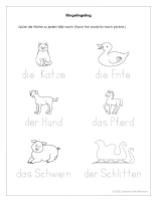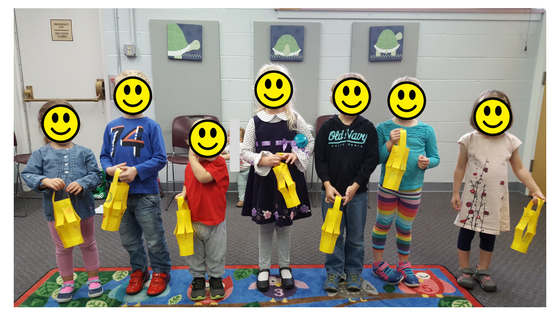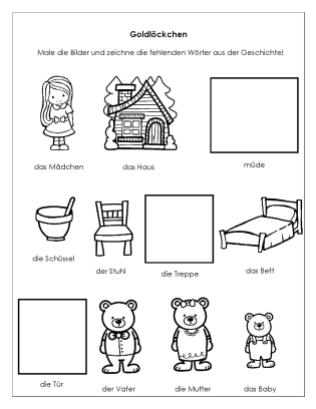I was back in the 1st/2nd grade today! So it was time to tell another story. I selected one of my favorite read-aloud children’s books: Klingelingeling by Nicola Smee (arsEdition, 2010; original English title: Jingle-Jingle).

Of course, I didn’t actually read the book. I told it as a story, which meant I had to add some description. Since the book is copyrighted, I can’t post my version of it here. But it wasn’t too hard to work out!
For today’s lesson, I wanted to add a brief discussion about the weather. So after our hello song, I asked the children about the weather for today. I told them the words in German and wrote them on the board: es regnet, regnerisch, warm, leichter Wind. I’d like to start each lesson with the weather in the future.
From there, we went right into our story. I was really pleased with how it went! It’s such a fun little story, especially when the horse climbs into the sleigh, so he can ride down the hill with the other animals! I did have to figure out how to draw all those animals, though! I used a book called The Usborne Step-By-Step Drawing Book (Usborne, 2014):

(They didn’t have a duck, so I looked up some ideas online.) When I drew the horse, I warned the children not to laugh at my drawings. They actually clapped! They could all tell it was a horse. Success! Here is a look at my finished story board:

When I finished the story, they asked where it was from. So I told them about the book. I happened to have it with me, so I showed it to them. Most of them wanted to hear it, so I read it aloud to them. I think it was actually a great way to reinforce the story and repeat the vocabulary!
I made up some worksheets for them to practice the main words: die Katze, der Hund, das Schwein, die Ente, das Pferd, der Schlitten. I thought about Schnee, too but decided to keep it to 6 words (I like even numbers!). The tasks included:
- matching picture to word
- tracing the word under the corresponding picture
- writing the word under the corresponding picture (I left this one out today and just used the tracing words)
- a word search
- cut out 4 images and paste them in the correct order on the next page
They did great with the first pages. Some of them had trouble with putting the images in order. It helped if they started with the last one first, since it’s obvious (they flew out of the sled when they reached the bottom of the hill). I did not expect them to be able to read the text under the pictures, but it’s there for exposure.
You can download the worksheets as a PDF file here: Klingelingeling Arbeitsblätter, 2018 GitA
Before I sent them off to work on the assignment, though, I had one more bit of fun with them. I decided to try a tongue twister! I do love a good tongue twister! I was surprised to find that I had to explain what it was for some of the children. But then I also got to show off my “Peter Piper” 😉
For our German tongue twister – or Zungenbrecher (literally: tongue breaker), I chose:
In Ulm und um Ulm und um Ulm herum
I started by teaching them how to pronounce Ulm. Oooooooo. Then add the L, then the M. Then make it short. Then we started very slowly. And we worked up our speed. Some of them got quite good at it!
After they completed their worksheets, I had one more surprise for them. They had been begging me to read an Elephant & Piggie book by Mo Willems. A few of them have been translated into German, and I just happen to have one: Das Buch über uns (Klett Kinderbuch, 2015; original English title We are in a Book).

For the most part, they really enjoyed it. And some of them knew it well enough in English to translate as we went along. That was fine. It was the end of a very long lesson (I ended up being in the class for an hour and a half!) at the end of a Friday half-day. So it would have been a lot to expect them to sit still and just listen!
Overall, I’d say it was a very successful lesson! I was exhausted, but then I usually am! And it’s so worth it! Even Froggy said he enjoys the lessons, even though he isn’t really learning anything new 🙂






















 Just look at those smiling faces 😉
Just look at those smiling faces 😉










